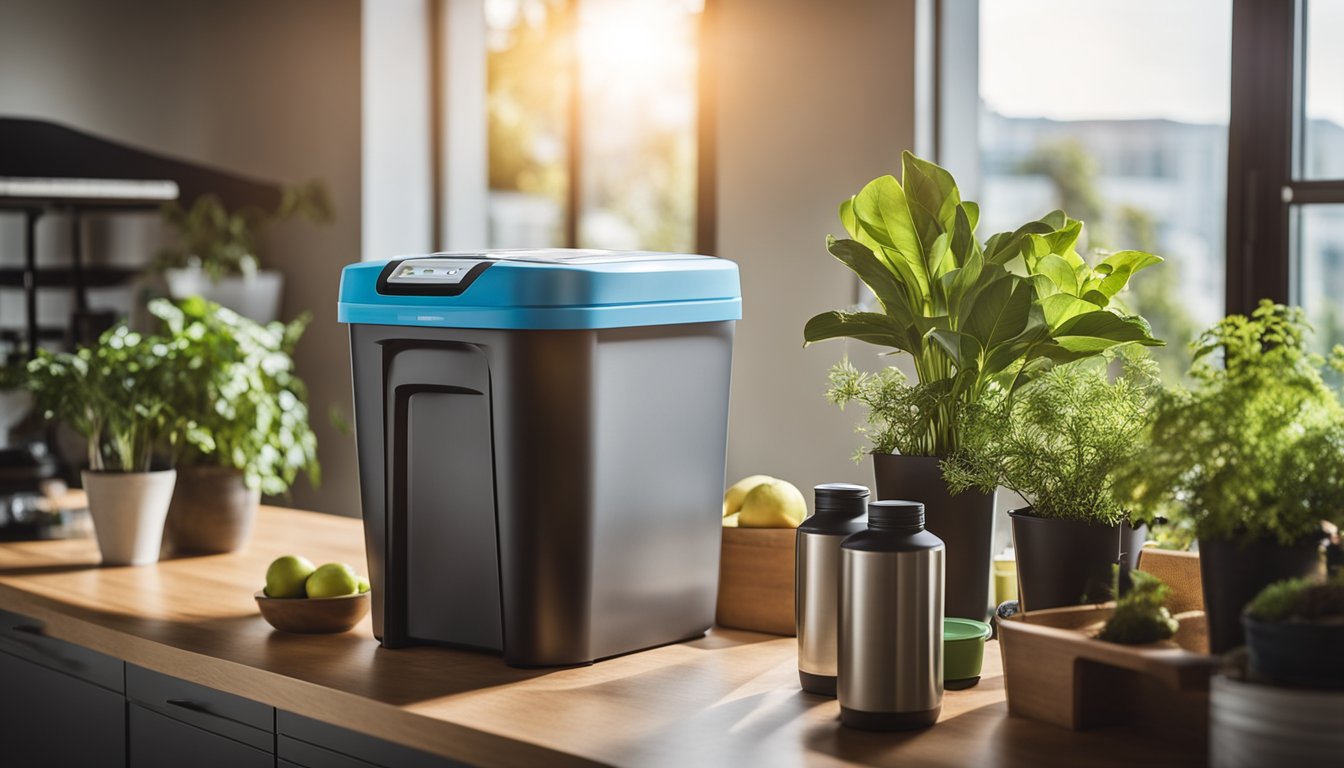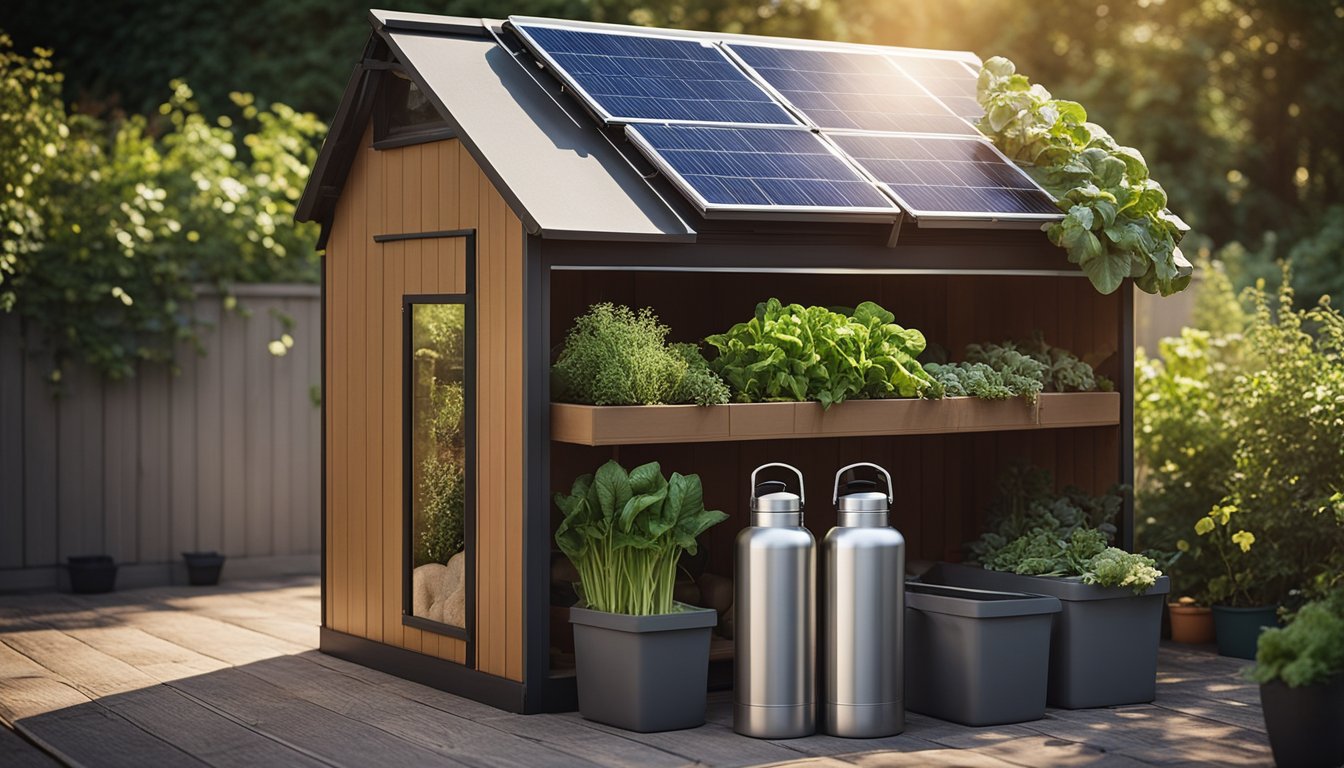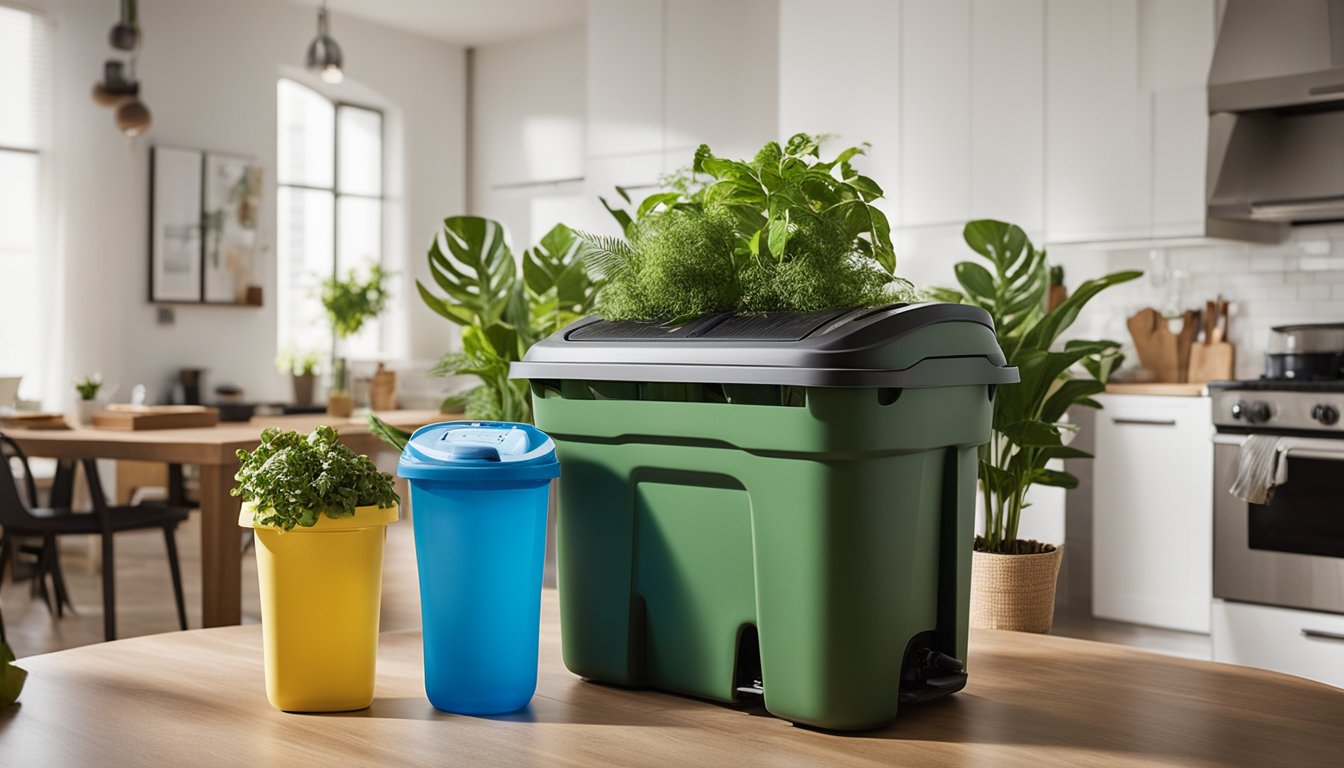Late updated: 11 Jan 2025 11:01
Written by: Sarah Hollister
Ten Easy Steps To Go Green At Home: Simple Sustainable Living Tips
Embarking on the journey to an eco-friendly life can seem daunting, yet it's simpler than we might think. With just a few changes to our daily routines, sustainable living can become part of our everyday life. Going green at home not only benefits the environment but can also result in cost savings thanks to reduced energy usage. These changes contribute to a greener planet and foster a healthier and more sustainable lifestyle for us all.

Our homes are spaces where small adjustments can accumulate into significant change. From energy conservation to minimising waste, there are numerous practices we can adopt. Whether it's switching to energy-efficient lighting or reducing water waste, each action contributes to the collective effort of creating an eco-friendly community. By integrating these steps, we can transform our daily routines into opportunities for a sustainable lifestyle.
As we strive to make our homes greener, it's critical to recognise the broader impact of our actions. We are part of a community that collectively shapes the future of our planet. Embracing these ten easy steps enables us to take meaningful action towards a sustainable future while also enjoying the personal benefits of reduced costs and healthier living spaces.
Key Takeaways
- Implementing small changes at home can lead to significant energy savings.
- Sustainable practices in daily life foster a healthier lifestyle.
- Collective action is vital for impactful eco-friendly living.
Optimising Home Energy Use
To conserve energy at home, we can focus on upgrading to energy-efficient appliances, switching to renewable energy sources, and making the most of natural light and ventilation. These strategies not only help in reducing energy consumption but also save on electricity bills.
Investing in Energy-Efficient Appliances
Energy-efficient appliances are pivotal in conserving electricity and reducing household energy consumption. Upgrading to devices that bear the Energy Star label or similar ratings can significantly impact our electricity use. For instance, modern washing machines and refrigerators often use half the electricity compared to older models.
Replacing incandescent bulbs with LED light bulbs is another effective step. LED bulbs consume up to 90% less energy and last much longer, which adds to cost savings in the long run. When purchasing appliances, always consider the long-term benefits of energy efficiency over initial costs.
Switching to Renewable Energy Sources
Adopting renewable energy sources, such as solar power, can drastically reduce our home's carbon footprint. Solar energy systems can be integrated into almost any modern or existing home setup, effectively cutting down reliance on the grid. By doing so, we not only reduce energy expenses but also contribute to a cleaner environment.
Installation of solar panels requires an upfront investment, but the benefits over time include significant savings on electricity bills. Additionally, in some regions, governments offer incentives for solar energy installations, further boosting the financial benefits.
Enhancing Natural Lighting and Ventilation
Maximising natural light and airflow within our homes can greatly aid in reducing energy needs. By using larger windows or installing skylights, we can make the most of natural light. This reduces the need for artificial lighting during daylight hours.
Incorporating features such as operable windows or vents helps in maintaining comfortable indoor temperatures, cutting down air conditioning needs. Utilising natural ventilation is one of the simplest forms of passive cooling, which can significantly enhance our home's energy efficiency.
Making thoughtful architectural choices and using sheer curtains or reflective surfaces can amplify these effects, contributing to a well-lit and energy-efficient living space.
Sustainable Practices in Daily Life

Adopting sustainable practices in our daily routines is pivotal for minimising our environmental impact. Through thoughtful actions focused on water conservation, eco-friendly shopping habits, and waste reduction, we contribute significantly to combating climate change.
Reducing Water Use and Preserving Resources
Conserving water is vital in reducing our ecological footprint. Simple yet effective methods include turning off taps while brushing our teeth and using cold water when washing laundry. Insulating our water heaters can also prevent energy loss.
Implementing eco-friendly personal care items and cleaning products further reduces water pollution. Educating ourselves about water conservation and adopting these habits not only saves water but also lessens the strain on our resources.
Adopting Eco-Friendly Shopping Habits
Eco-friendly shopping starts with using reusable shopping bags. These bags not only reduce waste but also help lower the demand for single-use plastics, which contribute to greenhouse gases. Prioritising local and seasonal produce can reduce environmental impacts from transportation.
Choosing products with minimal packaging or items made from recycled materials enhances our sustainable lifestyle. Considering the life cycle of products and opting for digital alternatives where possible can further diminish our environmental footprint.
Minimising Waste and Embracing Recycling
Waste minimisation and recycling are cornerstones of sustainable living. Composting organic waste, like food scraps, reduces landfill use and enriches soil health. Incorporating recycling practices into our routine by sorting plastics, paper, and glass is crucial.
Switching to reusable options, such as cloth diapers and cleaning cloths, decreases reliance on disposables. At the same time, reducing food waste through meal planning and proper storage techniques aids in lessening our environmental impact. By actively engaging in these practices, we contribute to a greener planet and celebrate Earth Day every day.
Frequently Asked Questions

We explore practical actions to reduce our carbon footprint, enhance energy efficiency, conserve water, minimise waste, and embrace sustainable alternatives in our homes. We also discuss fostering eco-conscious habits within our communities.
What are some effective ways to reduce my carbon footprint in my daily routine?
To lessen our carbon footprint, we can start by using public transport, cycling, or walking instead of driving. Optimising heating and cooling systems by setting appropriate temperatures and ensuring insulation helps too. Opting for locally sourced and seasonal foods can also make a significant impact.
How can I make my home more energy-efficient?
Switching to LED light bulbs is a simple yet effective measure. They consume less energy and have a longer lifespan. Installing smart thermostats lets us optimise energy use depending on occupancy. Additionally, regularly maintaining appliances ensures they function efficiently and consume less power.
In what ways can I conserve water within my household?
Fixing leaky taps and installing low-flow showerheads are quick steps to save water. Using dishwashers and laundry machines only with full loads conserves significant amounts. Collecting rainwater for garden use can also minimise water waste and reduce reliance on mains supply.
Which sustainable practices can I adopt to minimise waste at home?
Composting kitchen scraps reduces landfill waste and enriches soil without chemical fertilisers. Utilising reusable bags, bottles, and containers prevents single-use plastic consumption. Engaging in recycling by separating materials according to local guidelines helps manage waste effectively.
What eco-friendly alternatives can I use to replace common household products?
Eco-friendly cleaning products with natural ingredients safely disinfect without harmful chemicals. Bamboo or metal straws replace plastic ones. Cloth bags for shopping and storage replace disposable plastic bags, while rechargeable batteries reduce frequent waste from disposables.
How can I encourage eco-conscious behaviour in my local community?
Organising community clean-up events raises awareness and engages others. Sharing tips and experiences on social media can inspire wider adoption of green practices. Collaborating with local organisations or schools to set up sustainability workshops also promotes collective environmental responsibility.
